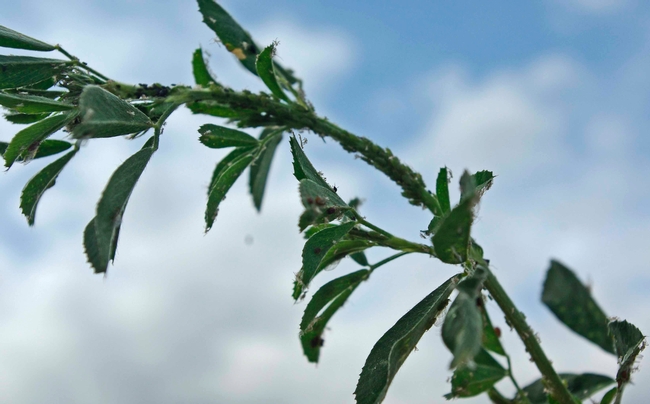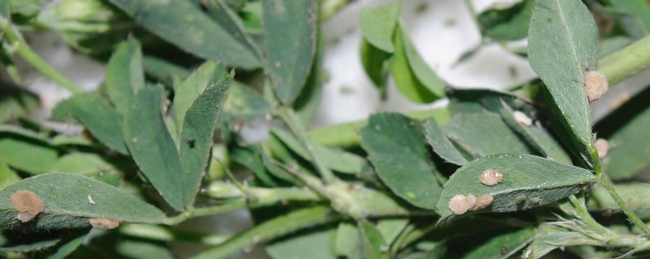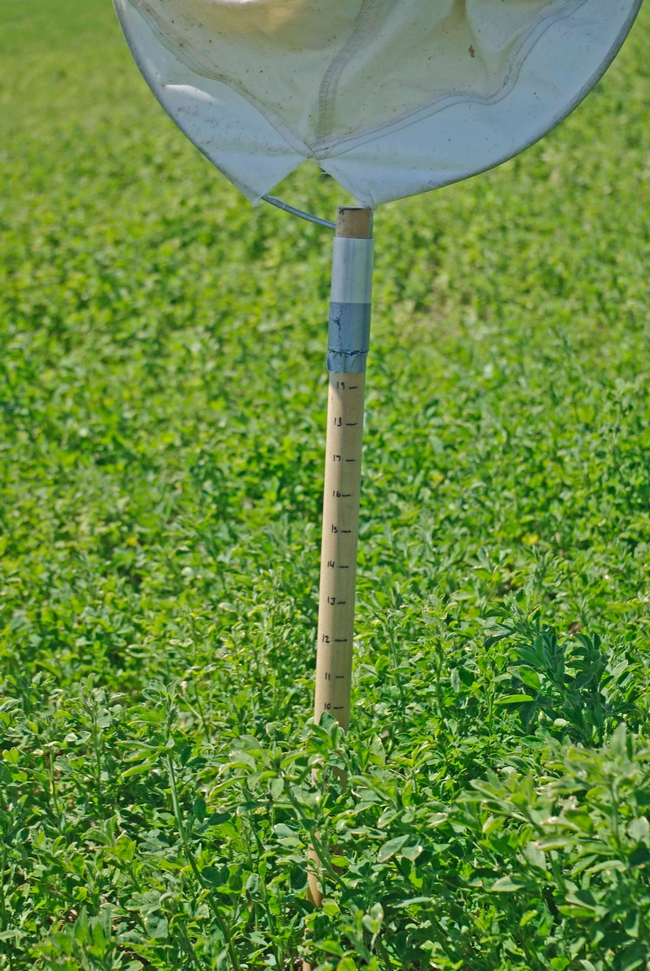As reported in this blog by Dr. Godfrey, the Blue Alfalfa Aphid has been reported at high levels. Entomologists with UCCE continue to monitor the situation with Pest Control Advisors and IPM Professionals. Here is a summary of observations in the San Joaquin Valley in past two weeks.
Extent of Outbreaks

While populations are widely noted, the heaviest densities have been very localized. In the Buttonwillow area of Kern County, populations exceed the threshold of 40-50 aphids per stem for hay prior to cutting. There are reports of alfalfa being damaged by the feeding in this area.


The reasons for the outbreak are unknown. The fields have received the same insecticide use pattern for alfalfa weevil as surrounding areas. The temperature profile is similar, as is the rainfall and relative humidity. Populations at threshold levels in first year fields are being seen in the Kern outbreak area even though no insecticides were applied this season. Large flights of winged aphid have been reported in Kern and Merced, so infestation of previously unaffected fields is not surprising.
While the ability to control these high populations has been problematic in the outbreak locales, initial screening did not indicate increased tolerance. Broad spectrum applications have been applied on second growth where natural controls were not keeping up with pressure. The use of these materials will continue to hold down natural enemy recovery but options in alfalfa are limited to carbamates, organophosphates and pyrethroids.
The cause of the localized outbreak is yet undetermined. Weather, population cycles, lack of natural control, lack of residual control and even the suggestion that new biotypes are present have all been suggested. A lack of early plant damage caused by blue alfalfa aphid feeding is not commonly seen as expected from the severity of outbreak. Some yellowing and delayed growth is reported on the second regrowth.
PCAs can play a major role in helping us understand this outbreak by keeping records from the fields that suffered high aphid populations. Useful information includes:
- insecticide use,
- efficacy of applications,
- presence of natural enemies (including fungi),
- variety,
- date of outbreak, and
- severity of damage symptoms and estimate of loss.
These observations will be invaluable to help explain the outbreak and provide baseline information for developing future remedies.
For now, many PCAs are taking a wait and see attitude, hoping natural biological control will finally kick into gear and that the damaged plants will recover during the next growth cycle.
Acknowledgements: I wish to acknowledge the following PCAs for their time in showing me fields and for sharing their knowledge about this pest: Dale Deshane, Tony Touma, Vern Crawford, Jerry Anderson, Robert Vandenburg, Tom Gage and Carlo Silva.